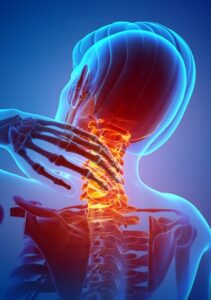What does cold do?
When you apply an ice pack to an area of your body the cold will cause the blood vessels to constrict, it decreases inflammation and reduces swelling as well as having a numbing effect.
The best time to grab those peas from the freezer is if the pain is acute-by this we mean it has come on suddenly and recently, so is usually the result of an injury. There’s a reason pitch side first aiders (and parents!) are well stocked with ice packs.
How do I ice an injury?
You can use a fancy dedicated ice pack or a packet of peas, as long as it’s cold it will help – the advantage of the peas is that they are nice and easy to mould around awkward angles like a sore elbow or knobbly knee. It’s important to protect the skin from cold burns so always wrap your ice in a damp cloth, a soggy tea towel is just fine. The damp will help the cold transfer better, just don’t sit on your best leather chair whilst you’re icing.
How long for?
Aim to ice the area for at least 10 minutes at a time and no more than 20 minutes. It does again depend a bit but probably icing every hour or 2 on the first day will be helpful.
With injuries, ice is your friend for at least 48 hours-do not use heat in this time, even though you will want that lovely snuggly, comforting feeling – it can make underlying inflammation worse so is best avoided for now.
Heat?
Applying warmth will increase blood flow, stimulating healing by increasing delivery of oxygen, white blood cells, platelets and nutrients. It’s also much more pleasant than icing, so can be more relaxing.
Heat is the preferable approach for longer term muscle spasms as it can directly work to undo that spasm and let the muscle ease. A ‘warmed up’ muscle can stretch more comfortably and reduce stiffness.
Hot water bottles, microwaveable wheat bags and heat patches are all fine but again do be careful not to use anything that is too hot – a warm, continuous heat is good, there’s no quick fix by cranking it up to boiling.
Big NO’s
Heat can be dangerous in certain circumstances so DO NOT put heat on open wounds, bleeds or anything that is oozing fluid.
You must also avoid if you have any condition that could impair your ability to detect damage-such as MS, diabetes, spinal cord injury, rheumatoid arthritis or poor circulation in general. Any burns can lead to inflammation and potential skin ulceration.
Heat AND ice
Not so crazy, honest – Contrast bathing is the alternating use of ice and heat-so a few mins of cold followed by a few mins of heat and so on for a few rounds creating rapid changes in the circulatory system locally having the effect of pumping blood into and out of the area which can help healing and recovery. Not suitable for everyone so always follow the advice you’re given.
So ultimately – keep your freezer stocked, listen to your osteopath and take care!
Or you can speak to one of our lovely reception team who will find a time to suit you, on 020 8545 0965.





